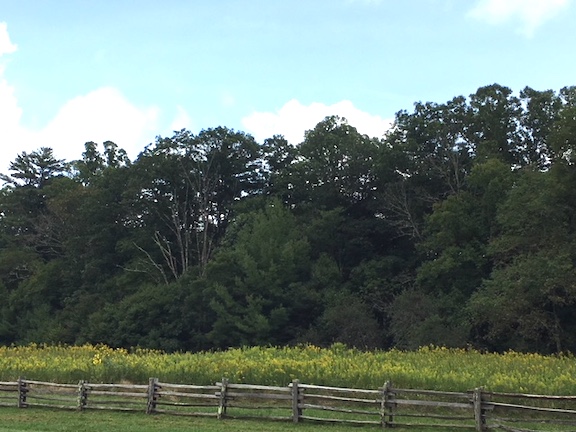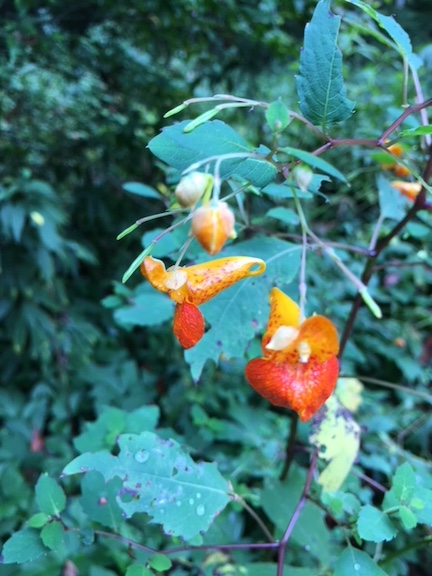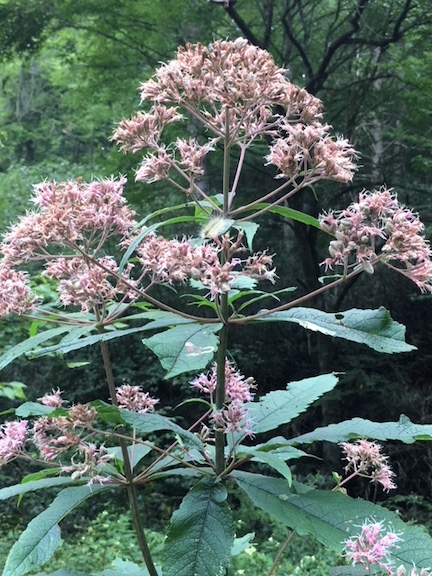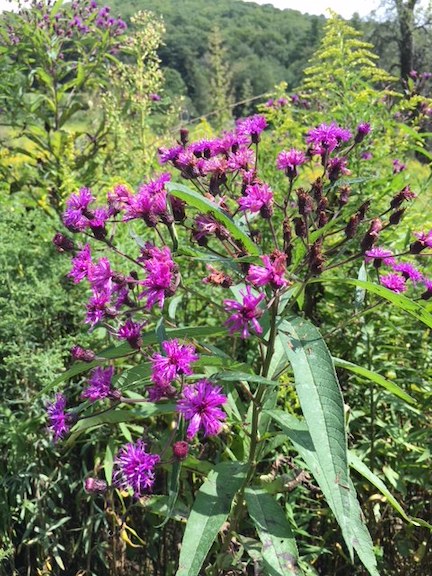My husband, Jack, and I had the opportunity to spend some time driving down the Blue Ridge Parkway last week. We were way too early for fall color (and the crowds!) but the wildflowers were magnificent.

Jack, not being quite as well versed about the plant names as I am, kept asking for identification as we passed fields of flowers in bloom. And so I told him: Joe Pye weed, butterfly weed, iron weed, jewel weed….Finally he stopped me and asked, “are they all weeds? And, what’s the difference between a wildflower and a weed?”
Ha, a great question that botanists and naturalists have been trying to answer for centuries. You might agree with Ralph Waldo Emerson who said, “A weed is a plant whose virtues have not yet been discovered,” but you probably only agree with him if you are not a gardener.
Another, unknown author, said that a weed is only a plant growing where you do not want it to grow and according to that definition, there were no weeds along the Parkway.

Goldenrod was most prevalent and I identified 4 different kinds. The National Park Service thinks so highly of their goldenrod that they fence it in. Just kidding. But the abundance of gold behind the quaint split rail fences make them appear precious and beloved.
There is a triumvirate of weeds that blooms profusely in fall. Along the roadsides, especially in drainage ditches where there is more moisture, jewelweed is thick. Although it’s most commonly orange, there were great expanses of yellow jewelweed as well. This is a native Impatien, related to the popular garden plants.

Joe Pye Weed towers above the rest of the wildflowers, often reaching a height of 6 feet or more. This is a butterfly and bee magnet. Sometimes the bees get so full, they seem to doze drunkenly on the plant. The flowers are not brilliantly colored but are a soft pinkish brown color.

For brilliance, look for the bright magenta ironweed, a spectacular, tall fall bloomer. The stalk is rigid and difficult to cut down, thus the common name. This, too, attracts many butterflies. It is the larval host for the American Painted butterfly. Seeds are eaten by finches and sparrows.

As much as I love these colorful roadside “weeds”, I’m not that enamored with the more pedestrian weeds that persist in my garden. I have to agree with William Shakespeare, who said “Sweet flowers are slow and weeds make haste.”
I saw a sign once that I really, really want to put up in my front yard. It said,
“Free Weeds. U-Pick.”
Please, come on by, pick all you want!!!

So strange to see your pictures of wildflowers, woods, and a blue sky when everything is on fire here and there is no sky, only days and days of smoke. Thanks for the reminder of other places of beauty at this summer’s end.
Beautiful exposée of Autumn’s just coming around the corner. Love your eye for what God has put out there. Even Jesus reminded us to look at the flowers of the field growing. Not even Solomon was dressed like one of these! Reminds me of God’s faithfulness for our many needs. Abundantly Pretty!